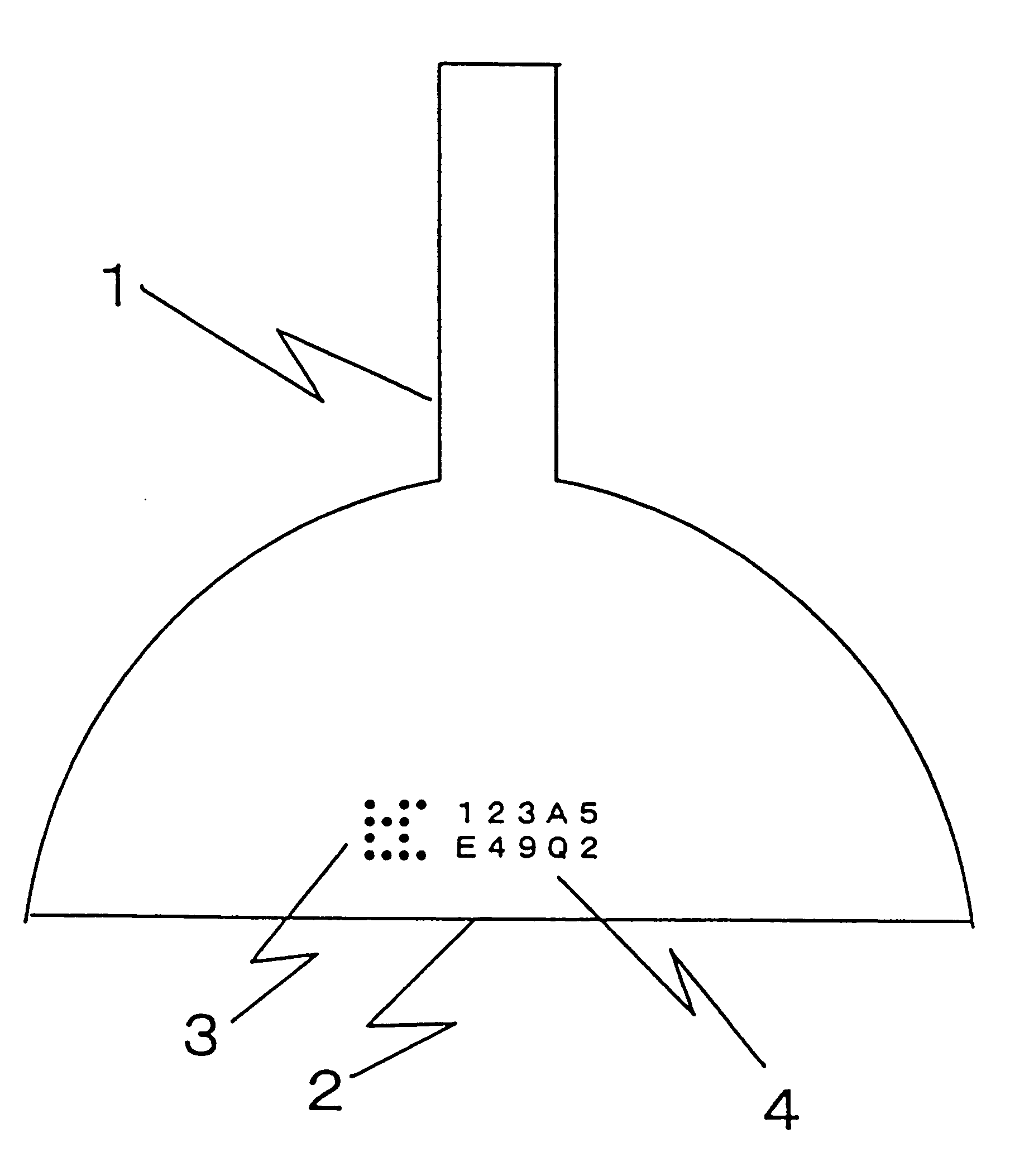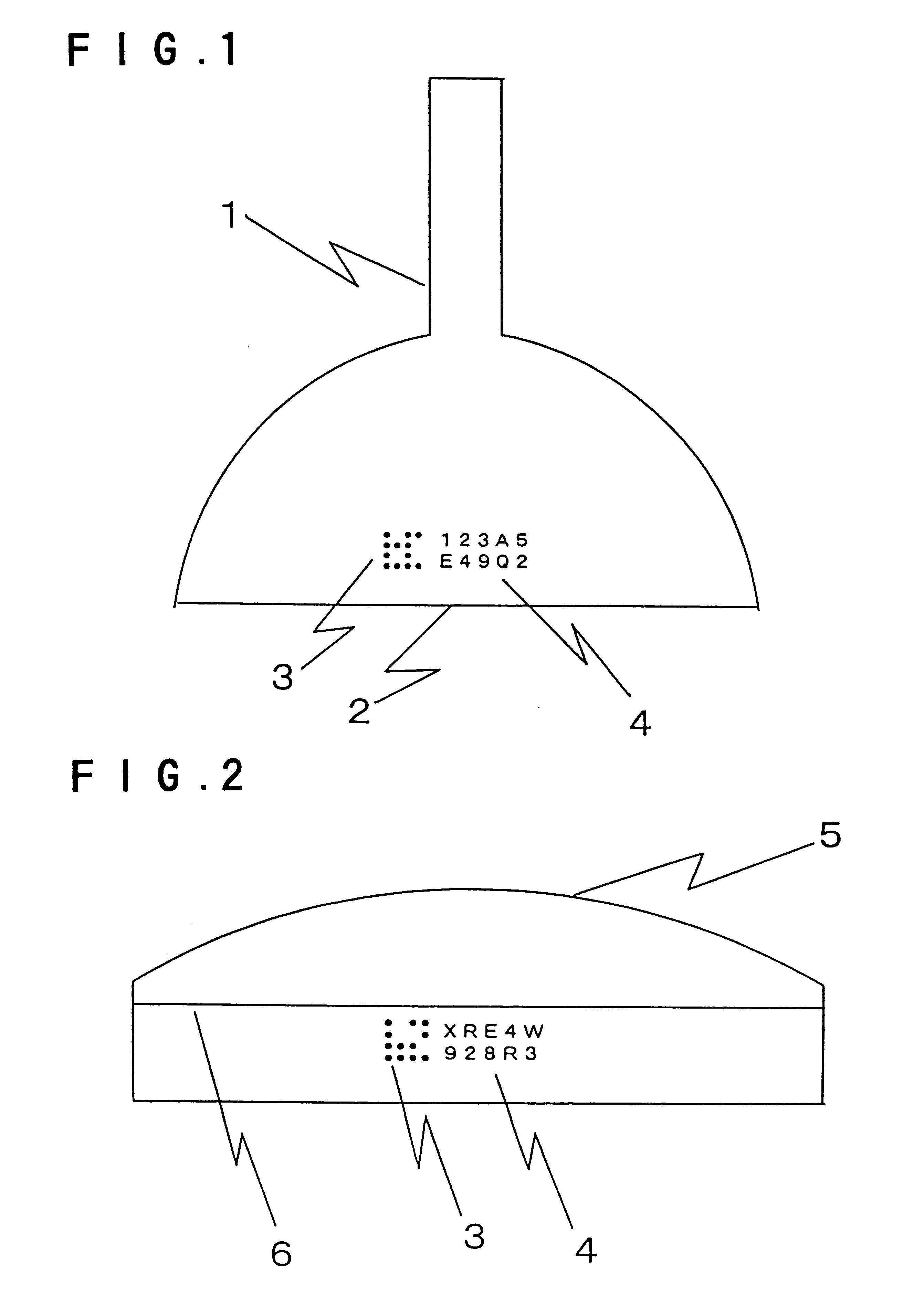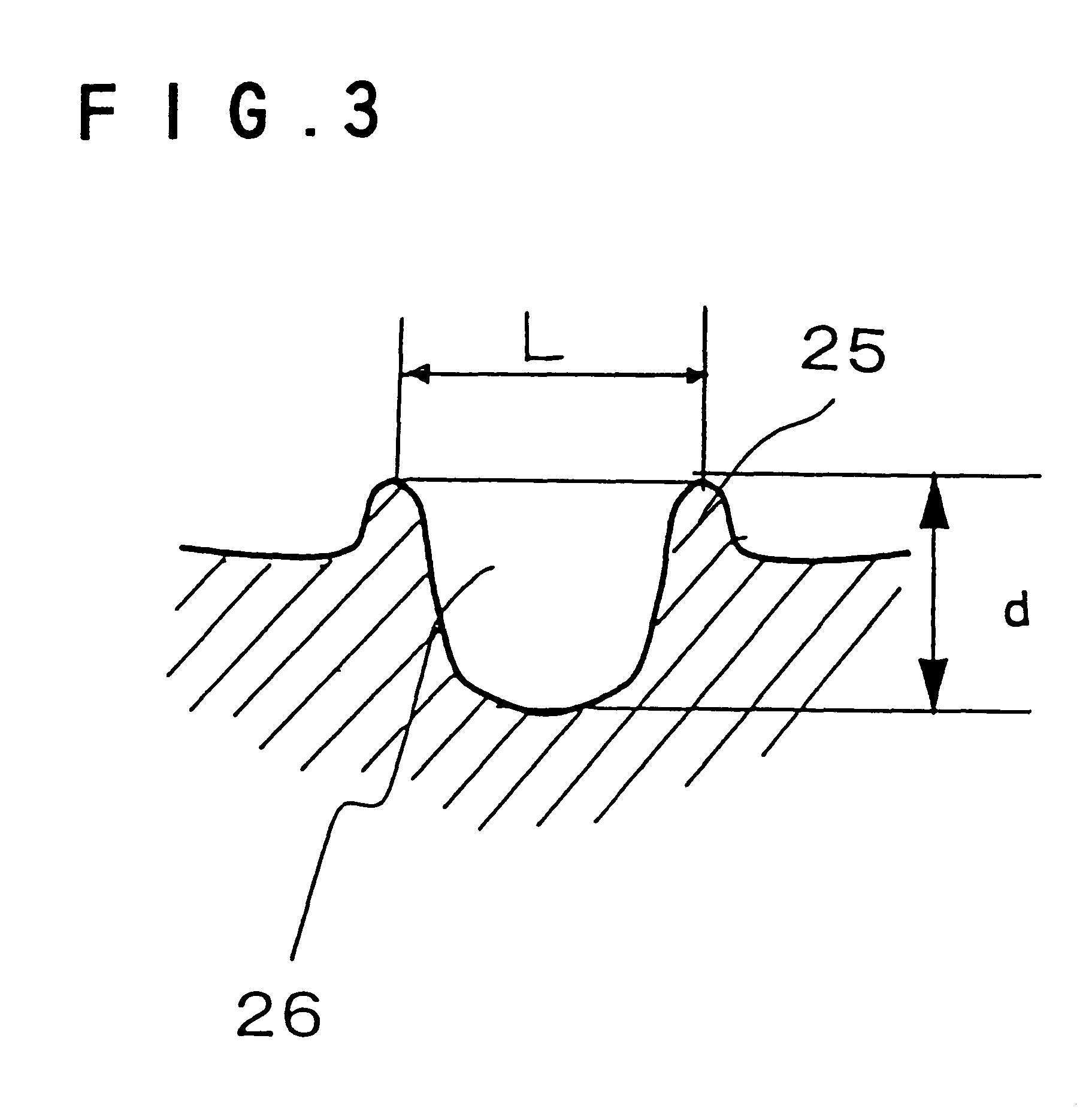Glass bulb for a cathode ray tube and a method for producing a cathode ray tube
a glass bulb and cathode ray tube technology, applied in the manufacture of electric discharge tubes/lamps, instruments, electrode systems, etc., can solve the problems of difficult to write information for a relatively short time, the information had to be separately given to each product, and the particulars of information had to be changed without changing the mask
- Summary
- Abstract
- Description
- Claims
- Application Information
AI Technical Summary
Benefits of technology
Problems solved by technology
Method used
Image
Examples
Embodiment Construction
An example of the present invention will be described with reference to the drawings.
FIG. 1 is a diagram showing a funnel 1 having an outer side surface in which a data matrix type two-dimensional matrix code 3 and characters and figures (hereinbelow, referred to as characters) 4 representing an inherent information on the funnel, which is incorporated in the two-dimensional matrix code are marked by laser at a position 20 mm higher than the edge surface 2 to be sealed and a central portion of a longer side of the funnel. A serial information for identifying the funnel is incorporated in the two-dimensional matrix code comprised of a plurality of dots. The size of the two-dimensional matrix code 3 is 6 mm square, the depth of each dot is about 20 .mu.m and the diameter is about 150 .mu.m.
FIG. 2 is a diagram showing a panel 5 in which a data matrix type two-dimensional matrix code 3 and characters 4 are marked, in the same manner as the funnel 1 in FIG. 1, at a position 30 mm apart f...
PUM
| Property | Measurement | Unit |
|---|---|---|
| diameter | aaaaa | aaaaa |
| depth | aaaaa | aaaaa |
| temperature | aaaaa | aaaaa |
Abstract
Description
Claims
Application Information
 Login to View More
Login to View More - R&D
- Intellectual Property
- Life Sciences
- Materials
- Tech Scout
- Unparalleled Data Quality
- Higher Quality Content
- 60% Fewer Hallucinations
Browse by: Latest US Patents, China's latest patents, Technical Efficacy Thesaurus, Application Domain, Technology Topic, Popular Technical Reports.
© 2025 PatSnap. All rights reserved.Legal|Privacy policy|Modern Slavery Act Transparency Statement|Sitemap|About US| Contact US: help@patsnap.com



